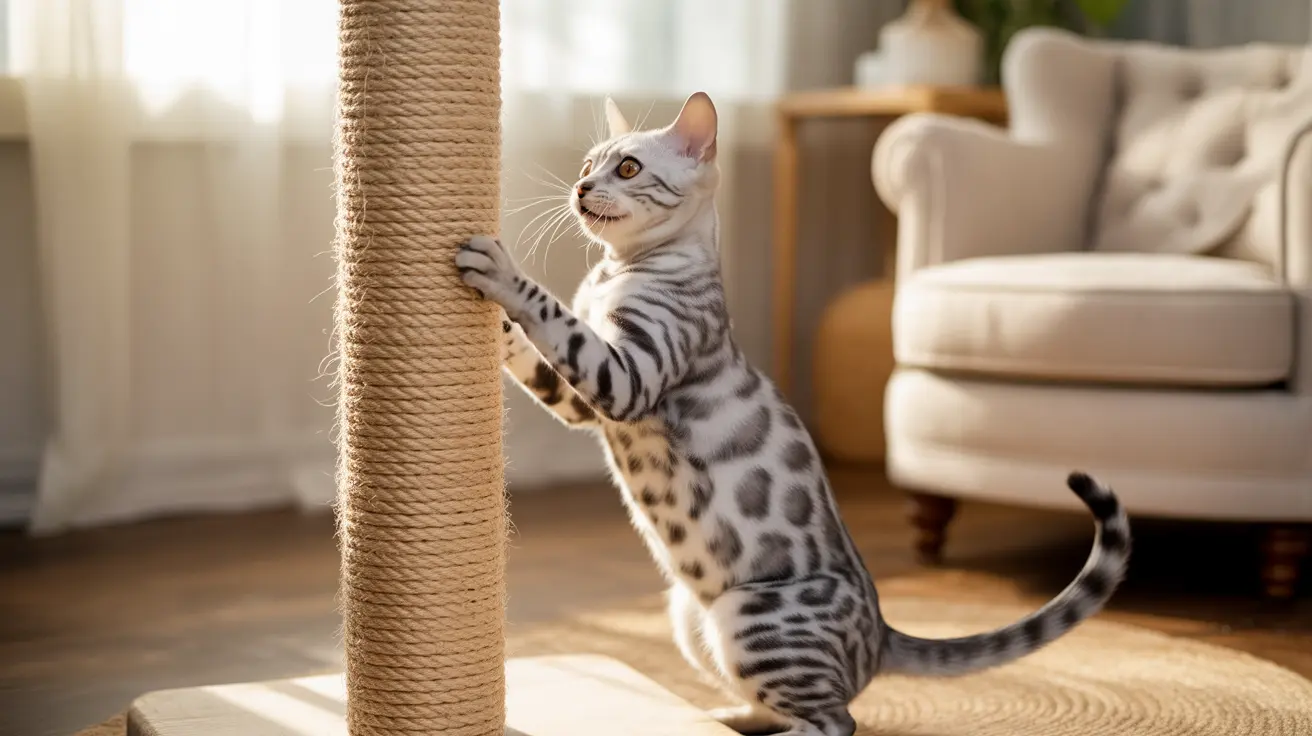Understanding Jute as a Cat-Safe Material
When choosing a scratching post for your feline friend, safety is paramount. Jute, a natural plant fiber, has gained popularity as a scratching post material, leading many cat owners to question its safety and effectiveness. This comprehensive guide will explore everything you need to know about jute scratching posts and their suitability for cats.
As the second most commonly used plant-based fiber globally after cotton, jute offers unique properties that make it an interesting option for cat furniture. Its natural, biodegradable characteristics and relatively soft texture have made it increasingly popular among environmentally conscious pet owners.
The Safety Profile of Jute for Cats
Jute is generally considered safe for cats when properly used in scratching posts. The natural fiber contains no toxic chemicals and breaks down naturally over time, making it a safer alternative to synthetic materials. Well-manufactured jute rope posts typically don't shed excessively, minimizing the risk of fiber ingestion.
However, there are some important considerations to keep in mind. While jute is safe for most cats, those with pica (a condition where cats compulsively eat non-food items) should be monitored closely when using any rope-based scratching post, including jute.
Durability and Maintenance Considerations
When it comes to durability, jute offers moderate performance compared to other materials like sisal. While it can withstand regular scratching, it tends to wear down faster than sisal rope, especially with very active cats. This softer nature can be both an advantage and disadvantage, depending on your cat's preferences and scratching habits.
Regular maintenance is essential for jute scratching posts:
- Inspect regularly for loose fibers or fraying
- Remove any loose strands promptly
- Replace the post when significant wear is visible
- Keep the post clean and free from debris
Comparing Jute to Other Scratching Materials
While jute has its merits, it's important to understand how it compares to other common scratching post materials:
- Sisal: More durable but rougher texture
- Carpet: Softer but may encourage carpet scratching elsewhere
- Cardboard: Inexpensive but less durable
- Hemp: Extremely durable and eco-friendly
Environmental Benefits and Natural Properties
One of jute's strongest selling points is its environmental friendliness. As a natural, biodegradable material, it's an excellent choice for eco-conscious pet owners. The fiber is sustainably grown and requires minimal processing, making it an environmentally responsible choice for pet products.
Tips for Choosing and Using Jute Scratching Posts
When selecting a jute scratching post:
- Ensure the post is sturdy and won't tip over
- Choose an appropriate height for your cat's size
- Look for tight, well-secured rope wrapping
- Consider multiple posts for multi-cat households
- Position posts in areas where your cat naturally scratches
Frequently Asked Questions
Is jute rope safe for my cat to scratch and play with?
Yes, jute rope is generally safe for cats to scratch and play with. It's a natural, non-toxic material that provides an appropriate scratching surface. However, always monitor for excessive wear and replace the post when necessary.
How does jute compare to sisal for cat scratching posts in terms of durability and texture?
Jute is softer and less durable than sisal but provides a gentler scratching experience. While sisal typically lasts longer, some cats prefer jute's softer texture. Sisal is generally considered more durable for heavy scratchers.
What precautions should I take when using jute scratching posts for cats with pica or chewing habits?
For cats with pica, closely monitor their interaction with jute posts and consider alternative materials if fiber ingestion occurs. Remove any loose strands immediately and replace posts at the first signs of significant wear.
How do I maintain and clean jute scratching posts to keep them safe for my cat?
Regular inspection for wear, prompt removal of loose fibers, and occasional brushing to remove dust and debris are key maintenance steps. Avoid using chemical cleaners that could be harmful to your cat.
Are there any health risks or allergies associated with jute materials for cats?
Jute rarely causes allergic reactions in cats and is generally considered safe. The main health concern would be potential intestinal blockage if large amounts of fiber are ingested, which is uncommon with proper supervision and maintenance.
Conclusion
Jute scratching posts offer a safe, eco-friendly option for most cats. While they may not be as durable as sisal, their natural properties and softer texture make them an excellent choice for many feline friends. The key to success with jute posts lies in proper selection, placement, and maintenance, along with careful observation of your cat's preferences and behaviors.






